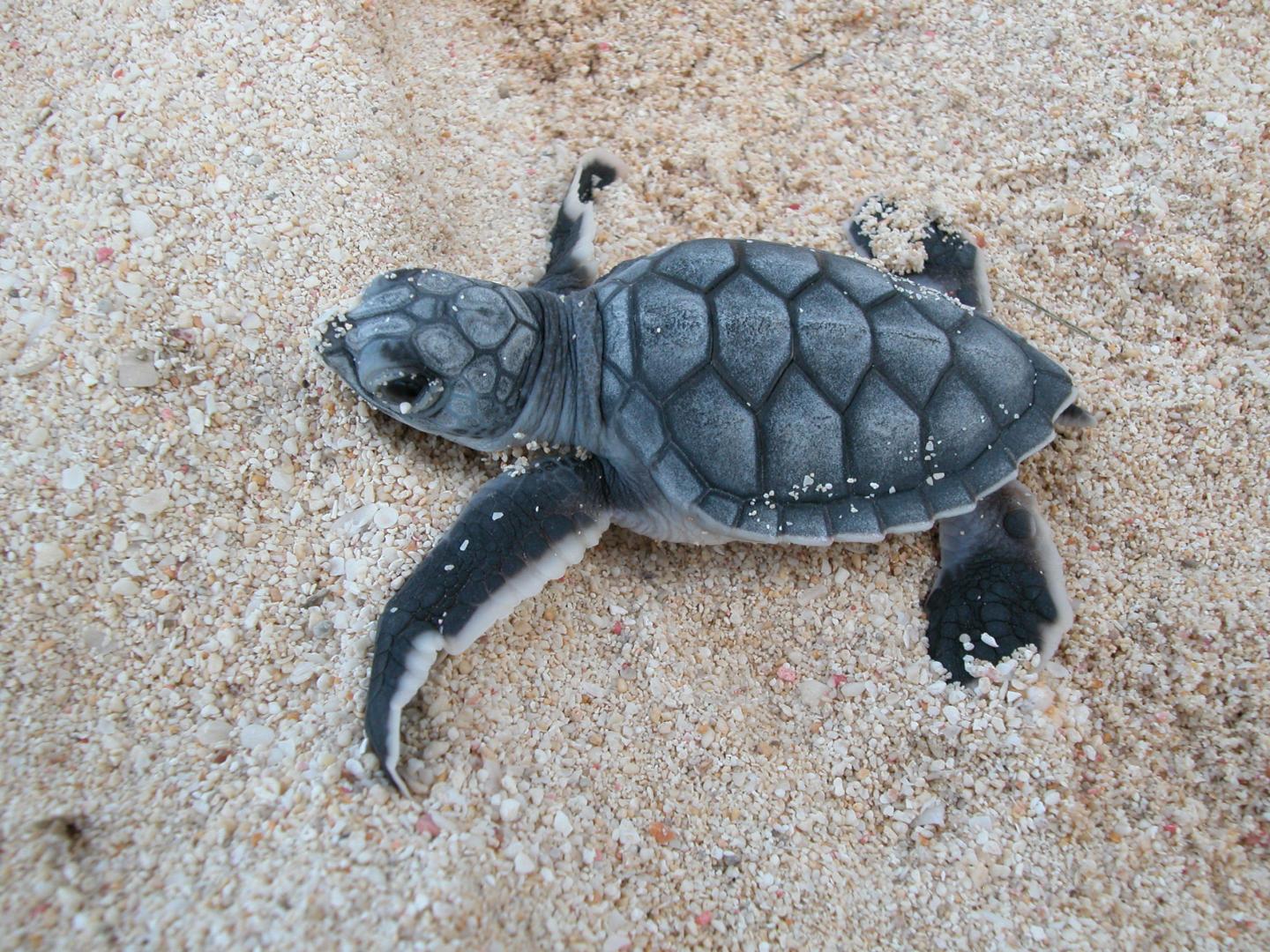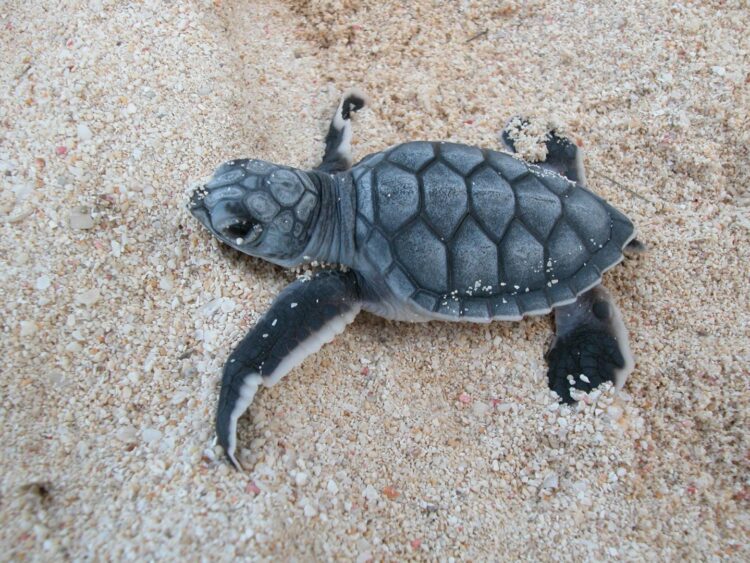
Credit: Cayman Islands Department of Environment
Sea turtles in the Cayman Islands are recovering from the brink of local extinction, new research shows.
Monitoring from 1998-2019 shows loggerhead and green turtle nest numbers increased dramatically, though hawksbill turtle nest numbers remain low.
In the first counts in 1998-99, just 39 sea turtle nests were found in total on the three islands. By 2019, the figure was 675.
Captive breeding of green turtles and inactivity of a traditional turtle fishery due to tightening of restrictions in 2008 contributed to this – but populations remain far below historical levels and still face threats including illegal hunting.
The study was carried out by the Cayman Islands Department of Environment and the University of Exeter.
“Our findings demonstrate a remarkable recovery for sea turtle populations that were once thought to be locally extinct,” said Dr Janice Blumenthal, of the Cayman Islands Department of Environment.
“A combination of factors is thought to have led to this conservation success story.
“It is likely that a captive breeding operation by the Cayman Turtle Farm (now the Cayman Turtle Centre) drove the increase in Grand Cayman’s green turtle population in the early years of monitoring.
“For loggerhead turtles, the most important factor was the restrictions placed on the legal turtle fishery in 2008.”
Dr Jane Hardwick, also of the Cayman Islands Department of Environment, added: “For both species, the recovery was assisted by protection efforts by the Cayman Islands Department of Environment on nesting beaches, including patrols by conservation officers to reduce illegal hunting.
“However, our study finds that illegal take is an ongoing threat, with a minimum of 24 turtles taken from 2015-19, many of which were nesting females.
“Artificial lighting on nesting beaches, which can direct hatchlings away from the sea, increased over the period of our study.
“Additionally, as highly migratory endangered species, sea turtles are influenced by threats and conservation efforts outside of the Cayman Islands, showing a need for international co-operation in sea turtle management.”
Historically, the Cayman Islands had among the world’s largest sea turtle nesting populations, with turtles numbering in the millions. By the early 1800s, the populations had collapsed due to human overexploitation.
The new study shows that, despite reaching critically low levels, nesting populations of green and loggerhead turtles have recovered significantly.
Hawksbill turtle nest numbers have not increased in tandem with loggerhead and green turtles – with a maximum of 13 hawksbill nests recorded in a single monitoring season.
Information on turtle nests is being used by the Cayman Islands authorities to target management efforts.
This includes “turtle-friendly lighting” initiatives, and a greater level of habitat protection for key areas has been proposed under the National Conservation Law of the Cayman Islands.
Professor Brendan Godley, of the University of Exeter, said: “I was fortunate to have been involved in establishing the turtle monitoring programme with the Department of Environment in the Cayman Islands back in 1998 and it is fantastic to see how protection and awareness has resulted in an increase in nesting turtles.
“The wonderful team and leadership of the Department of Environment have been instrumental in driving the monitoring and conservation.”
Department of Environment Director Gina Ebanks-Petrie said: “We are extremely grateful to the many volunteers, interns, property owners, businesses, organisations and members of the public who have assisted with sea turtle conservation efforts over the past two decades.
“Sea turtles are a national symbol of the Cayman Islands and our community has come together to demonstrate our commitment to their protection. This research gives us essential information for strategically targeted management efforts to secure future survival of these populations.”
The paper, published in the journal Frontiers in Marine Science, is entitled: “Cayman Islands sea turtle nesting population increases over 22 years of monitoring.”
###
Media Contact
Alex Morrison
[email protected]
Related Journal Article
http://dx.





